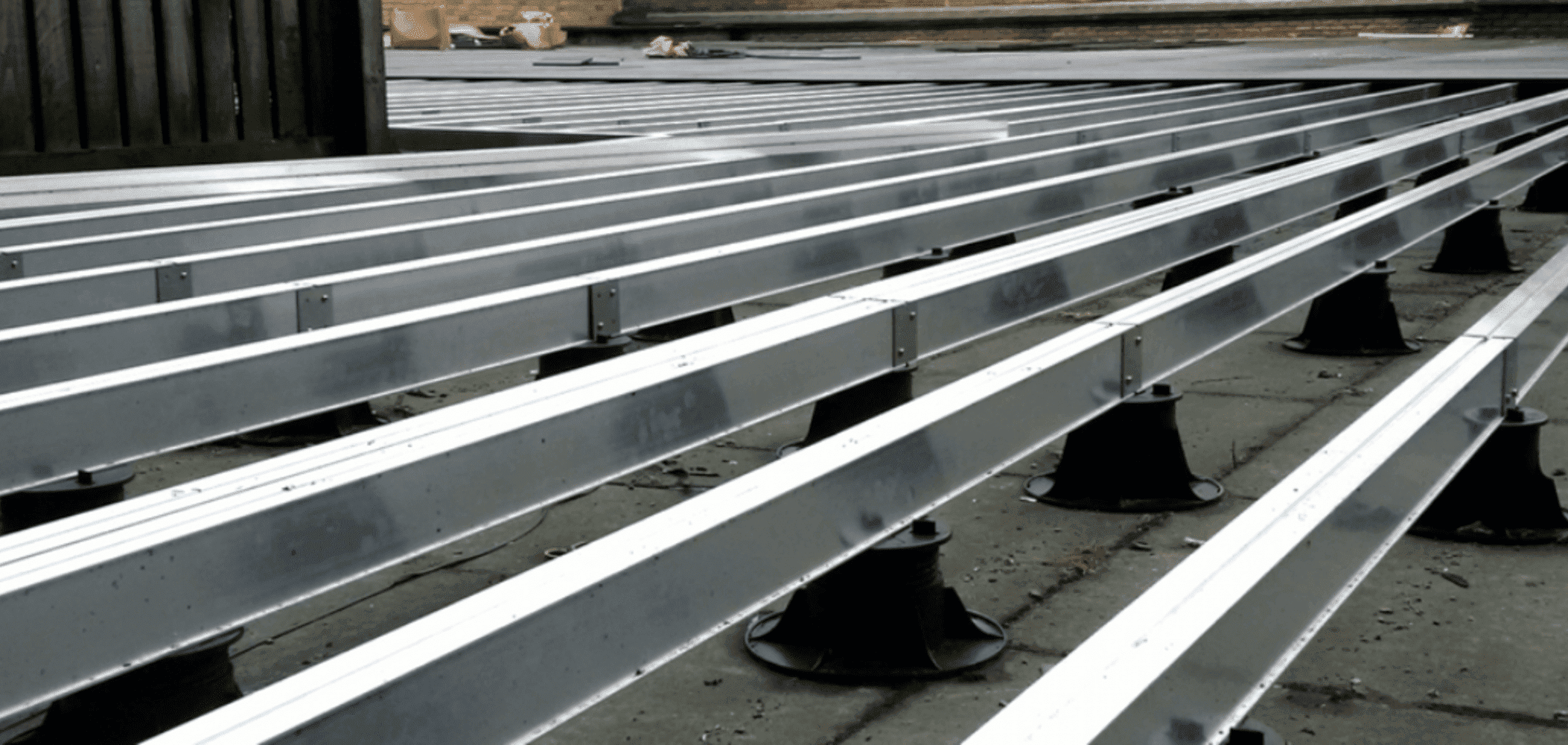Decking is a fantastic way to make the most of a space that might otherwise go unused: whether that’s a flat roof, garden sun-trap or another outdoor space. Sub-frames form a deck’s skeleton so having a strong, durable system is essential if you want your deck to remain looking good.
Traditionally people have installed outdoor decking on a timber sub-frame, which can quite quickly twist and warp, eventually succumbing to rot and needing to be totally replaced.
Designers, installers and homeowners alike are beginning to raise serious questions about the efficiency of this process.
But what is superseding it? Aluminium: which is more than up to the challenge of replacing timber.
Let us convince you why!
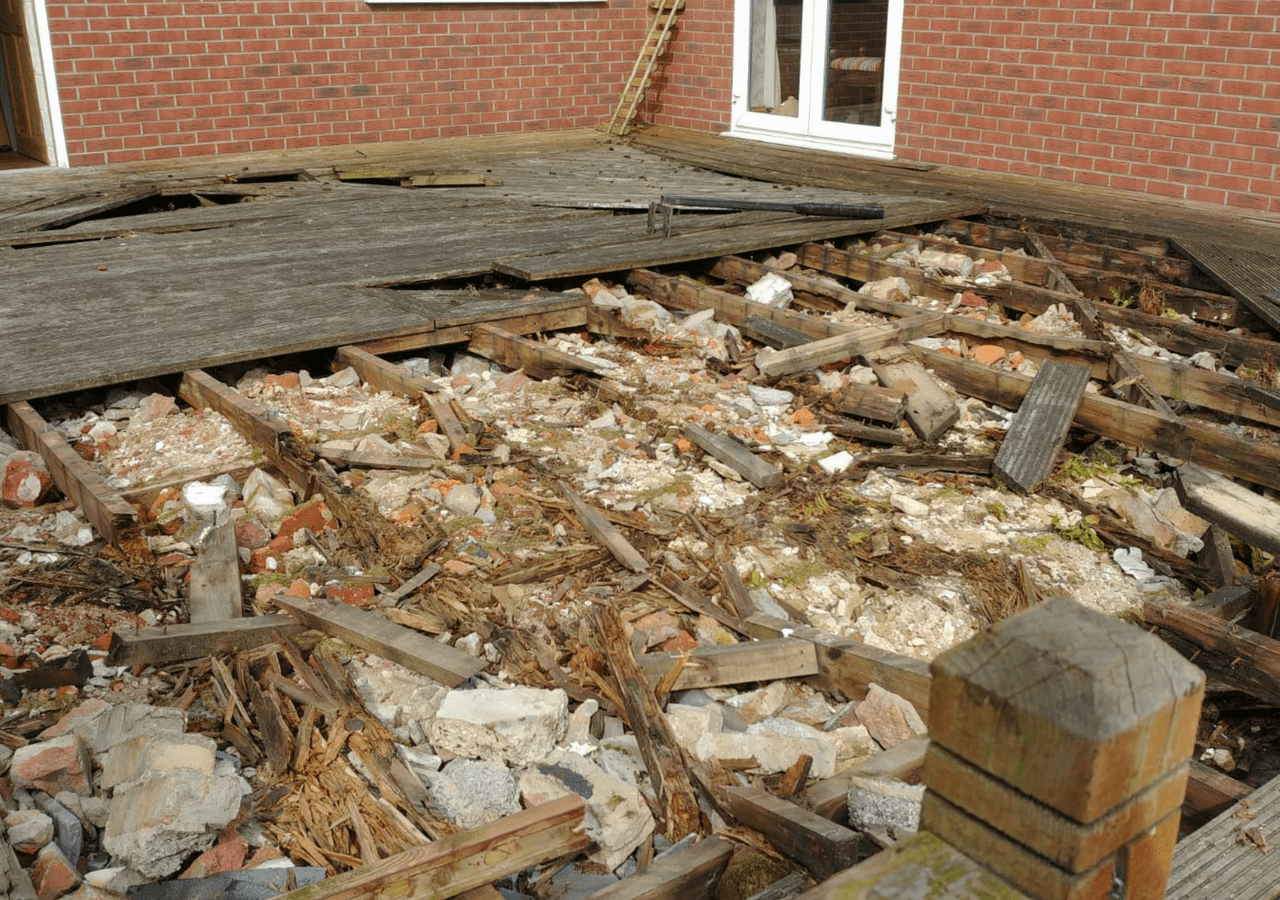
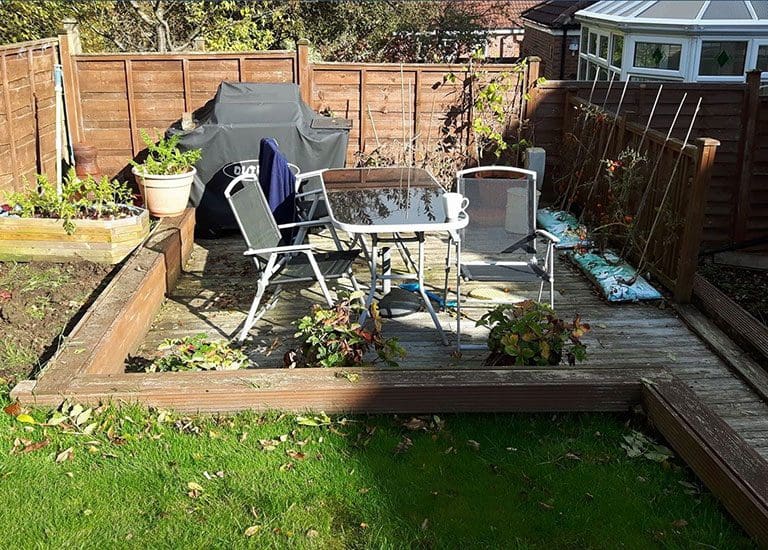
It’s superior in strength
Timber decking sub-frames need to be carefully installed, taking into account the irregularities of timber as a natural material. With the increasingly frequent issue of depth restrictions in decking installations, timber bearer sizes are being reduced to enable the decking surface to be low enough, causing ‘bouncy’ walking surfaces with the additional risk of the timber bearers breaking under stress.
With its vastly superior strength and depth ratio, aluminium substructures can allow a support height as low as 25mm whilst still adhering to the stringent industry loading criteria of 4kN/m².
Aluminium will not bow between supports/pedestals. When using a robust, high-quality joist in aluminium, the decking supports can be spaced over a metre apart.
Pair this with plastic deck supports and you have a strong, robust deck sub-frame that is tried, and tested to withstand weight.
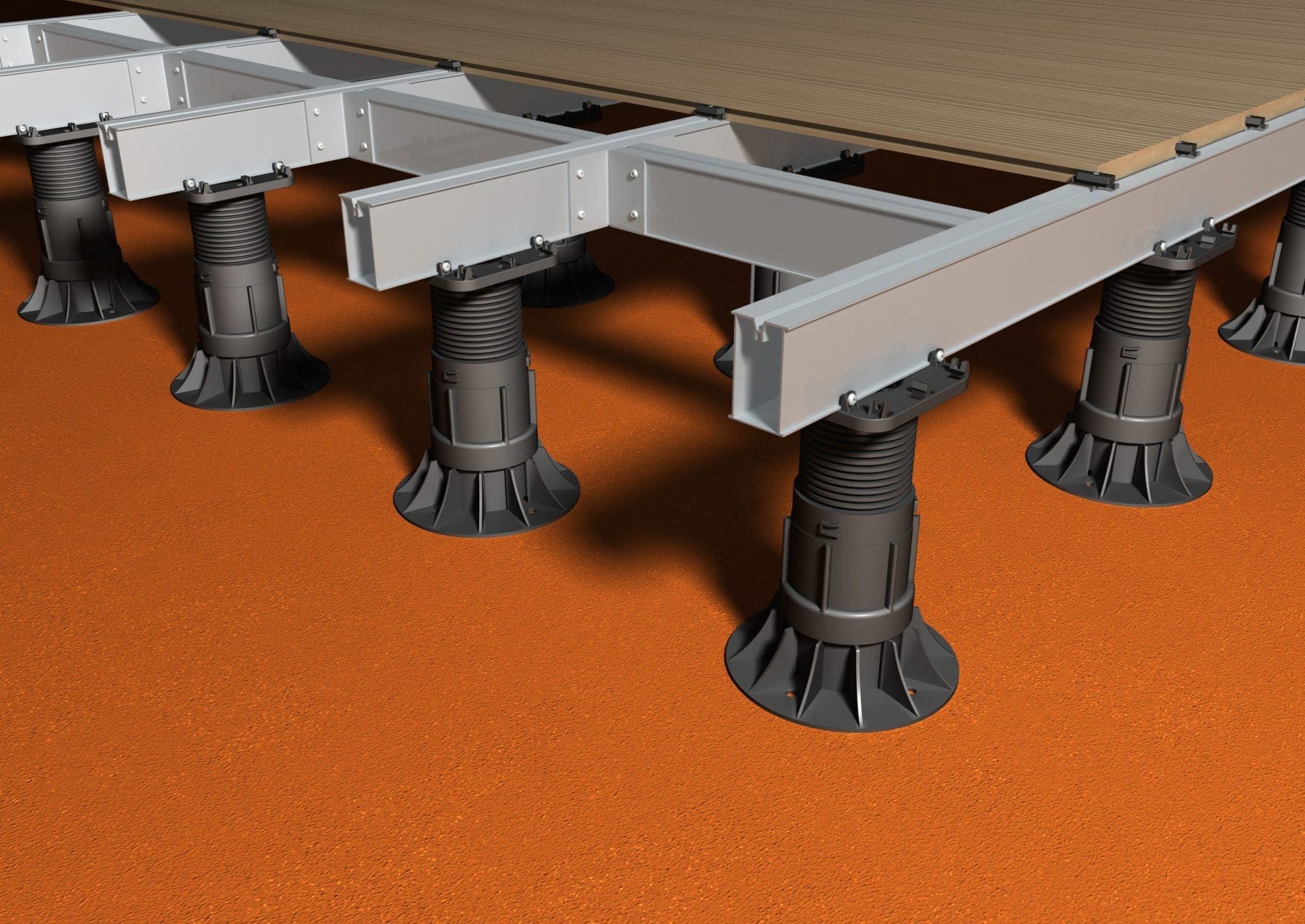
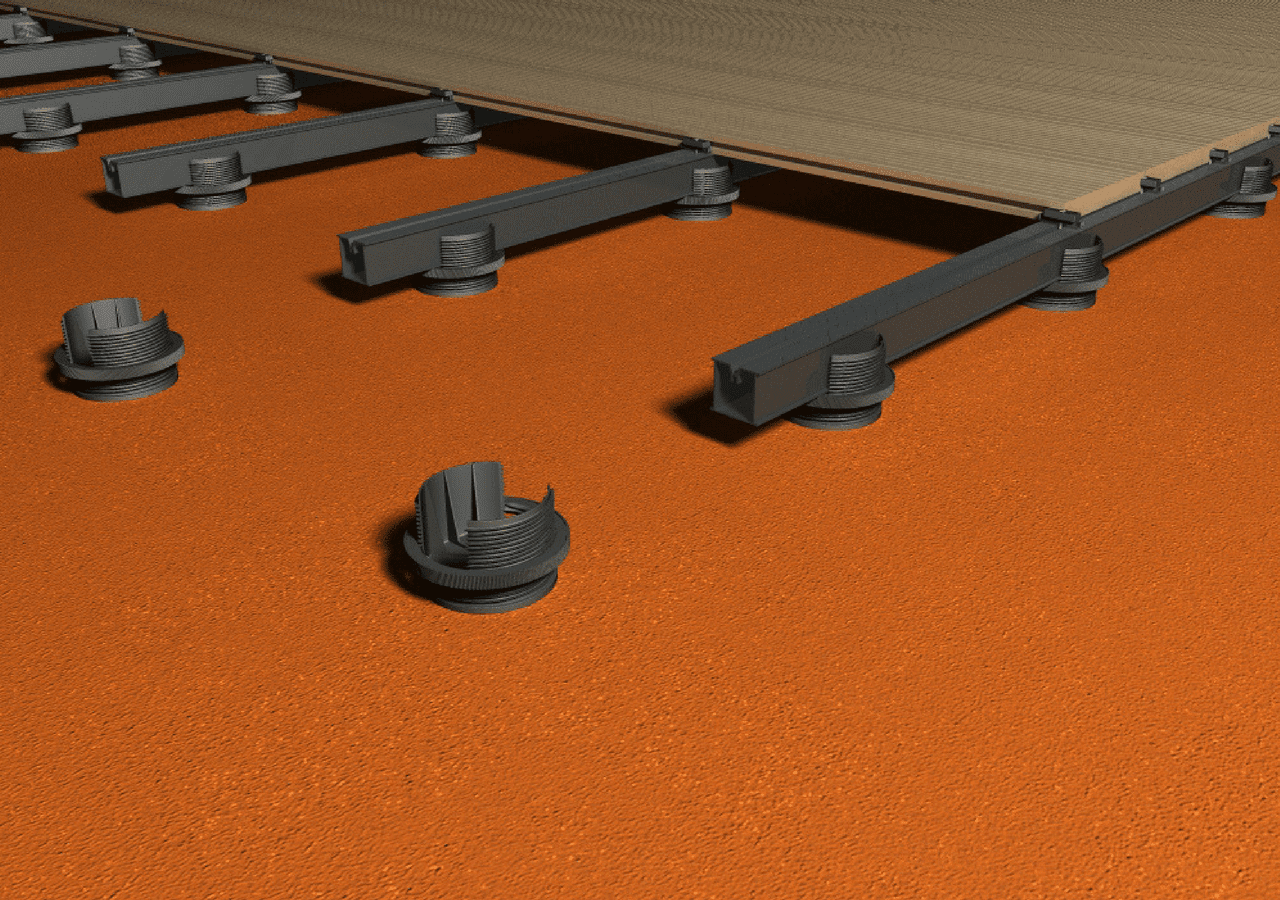
It’s more versatile
There is a common misconception that aluminium is harder to work with than timber. However, this isn’t true. Provided you have a chop saw with an aluminium blade, aluminium decking joists can be cut to size, with the familiar ease and speed of timber.
Joist connections are just as simple to make, using connector brackets.
Variance in the building surface is resolved with little to no effort using adjustable pedestals, which correct sloping ground and roof falls without the need to cut timber posts to size each time.
What’s more, Aluminium is far lighter than timber. Aluminium decking joists will impose far less weight on any supporting roof structures than traditional sub-frames.
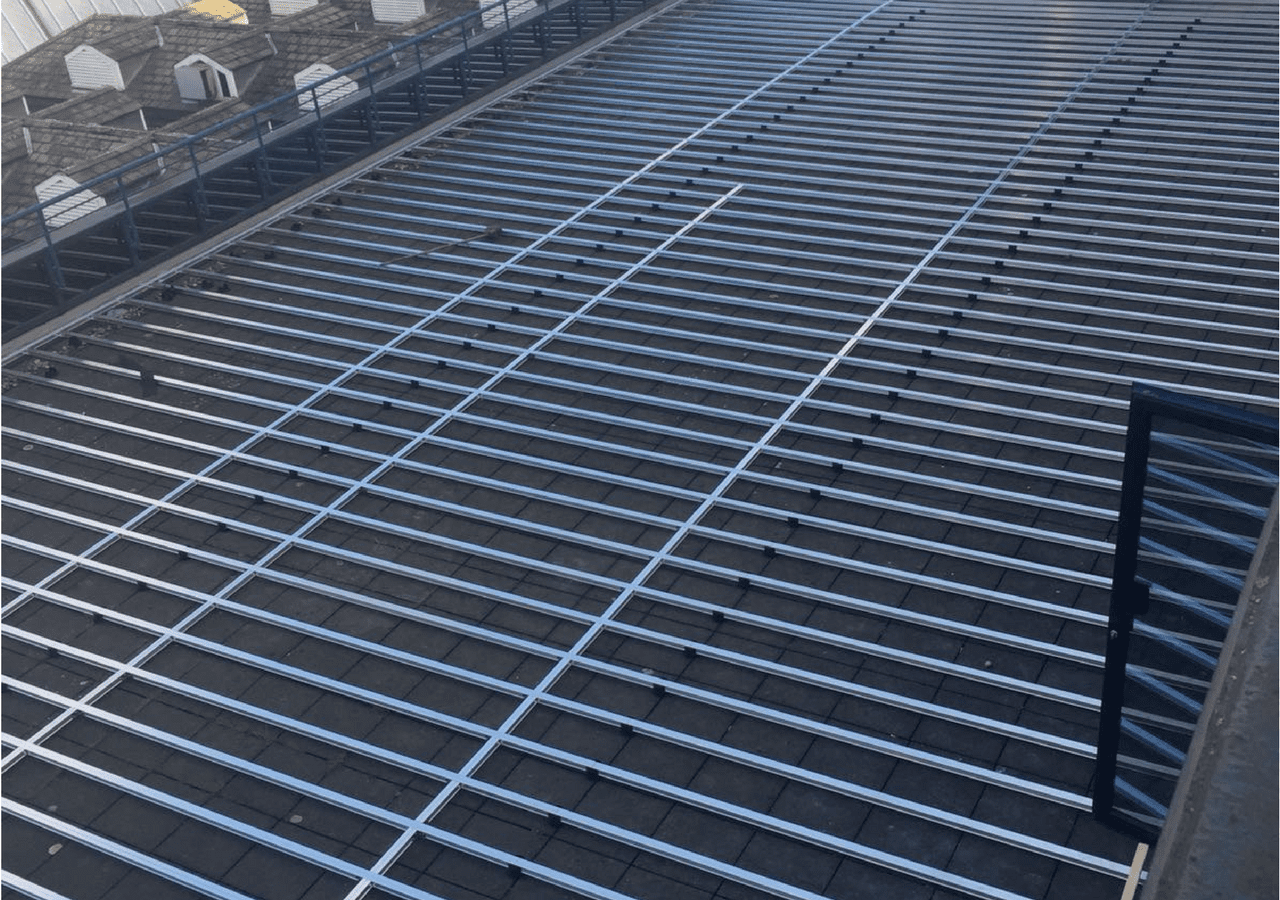
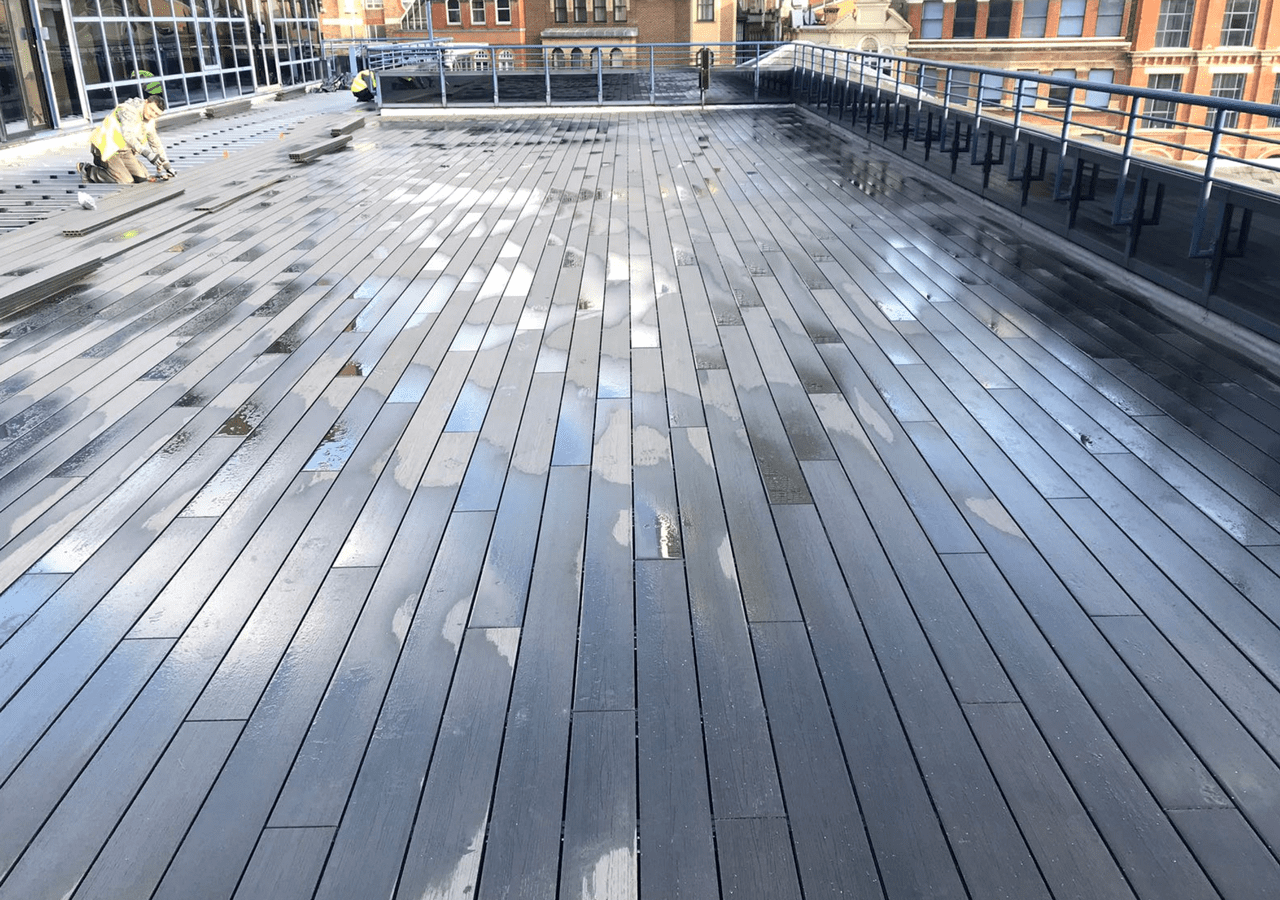
It’s safer too
Large timber structures, such as decking and its substructure, pose a considerable fire risk. Which is a particularly sizable consideration on the balconies and terraces of high-rise buildings. But it doesn’t need to be with aluminium: a non-combustible material that won’t burn.
Have we managed to convince you?
If durability, superior strength, stability and incontestable safety aren’t enough to convince you that aluminium sub-frames are the future of decking support, just look at the rapid growth of RYNO over the last few years.
Join the many already enjoying the benefits of using aluminium decking substructures.
